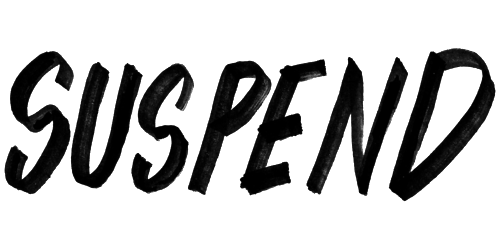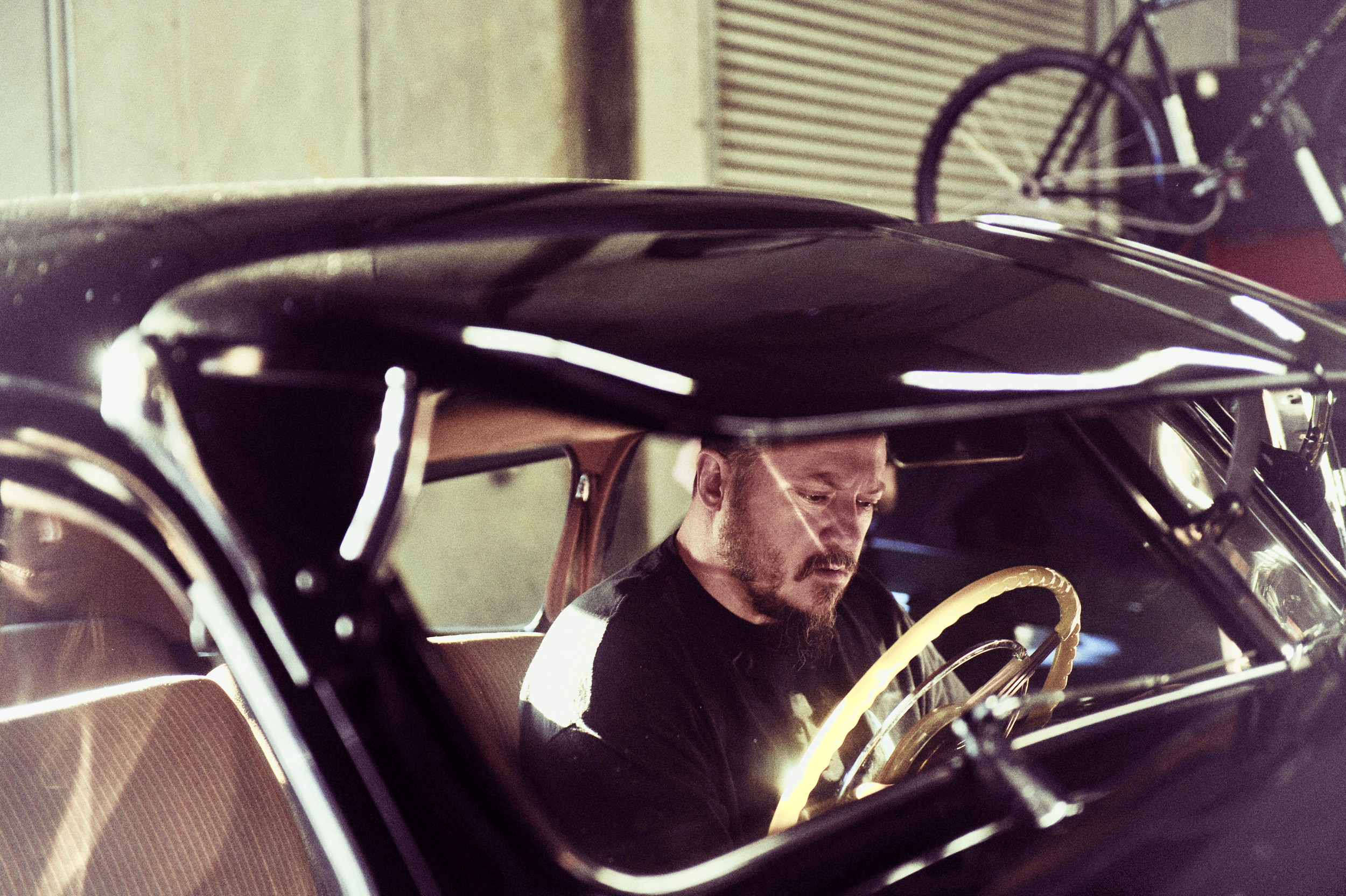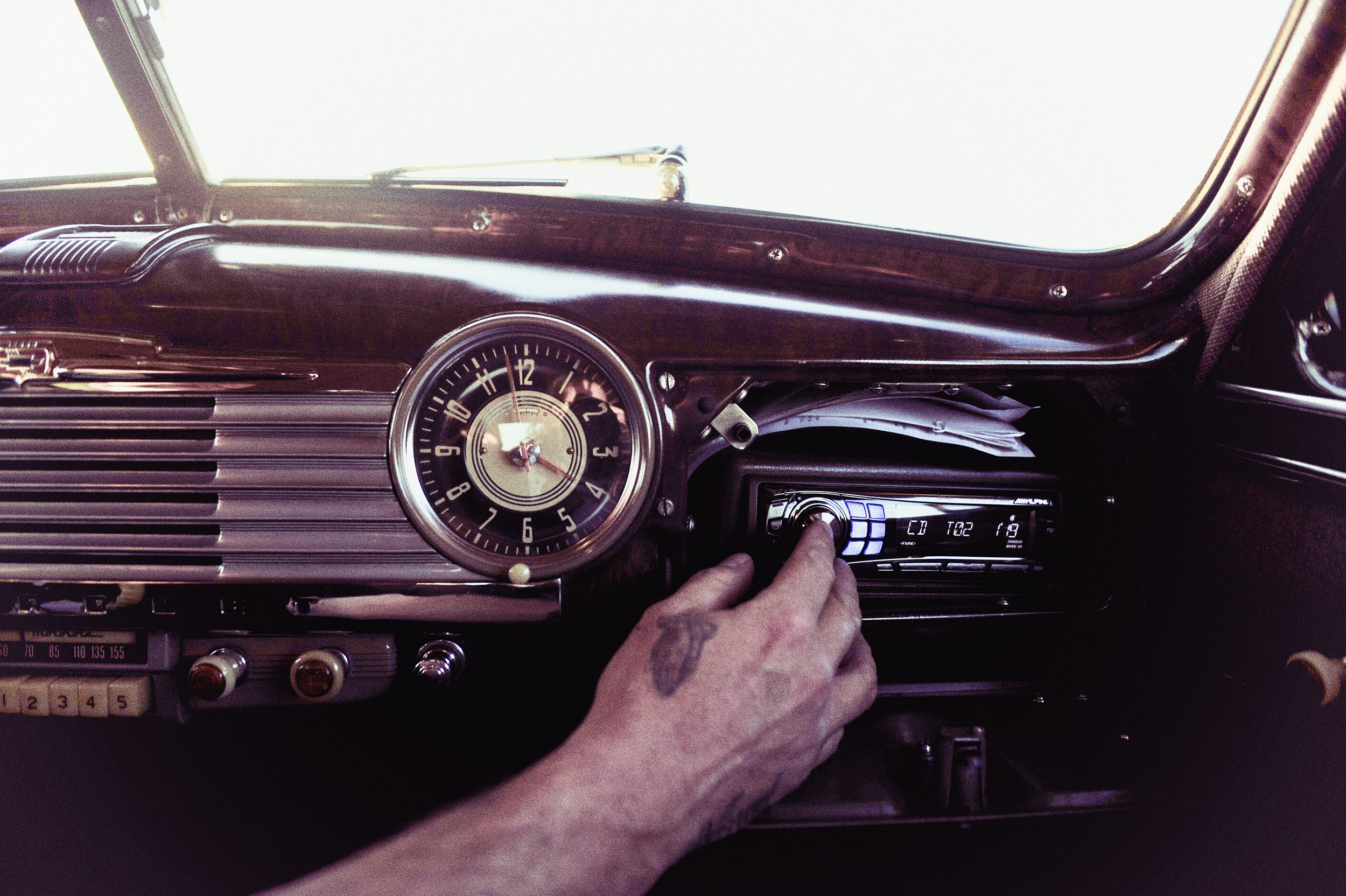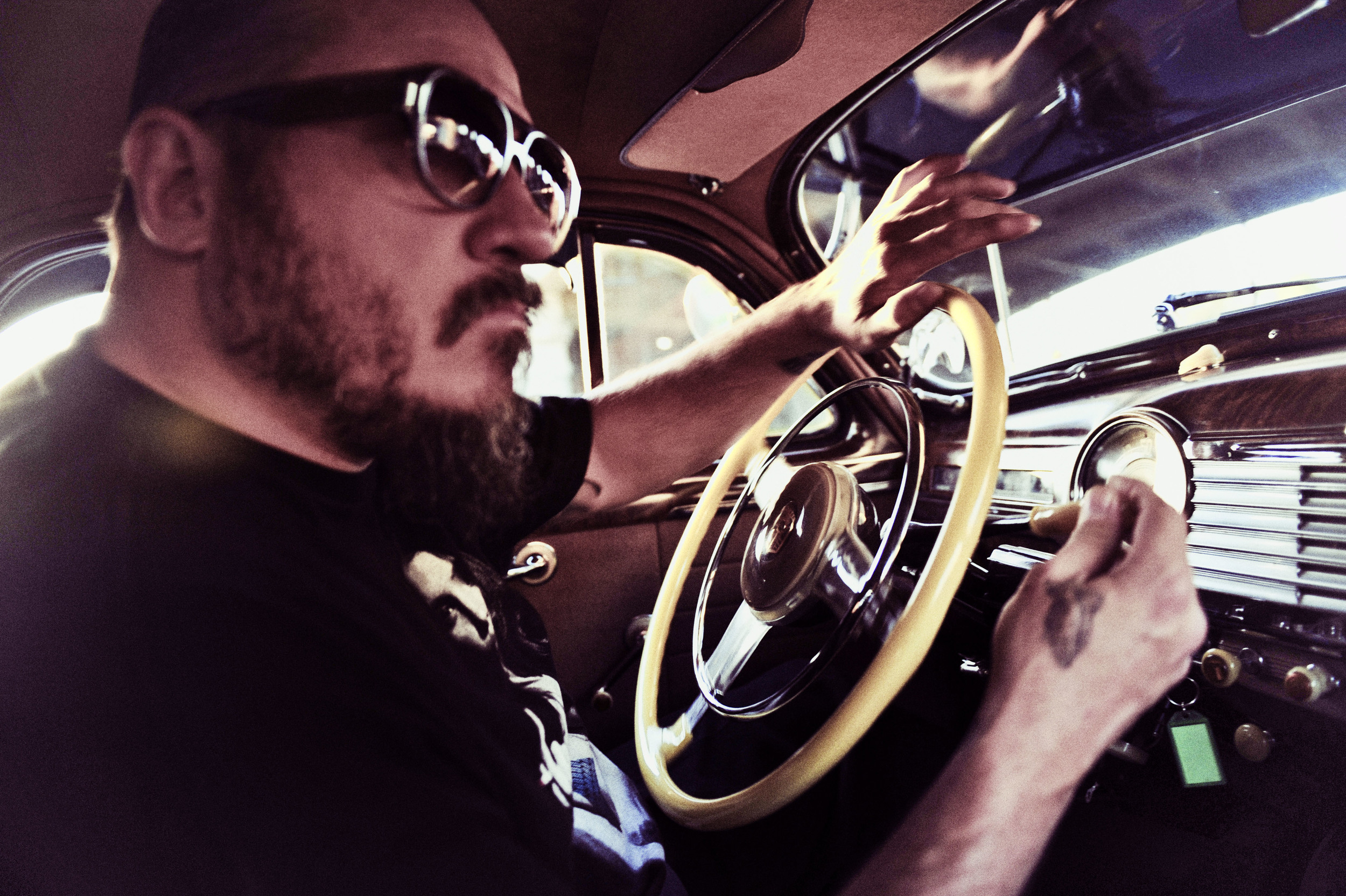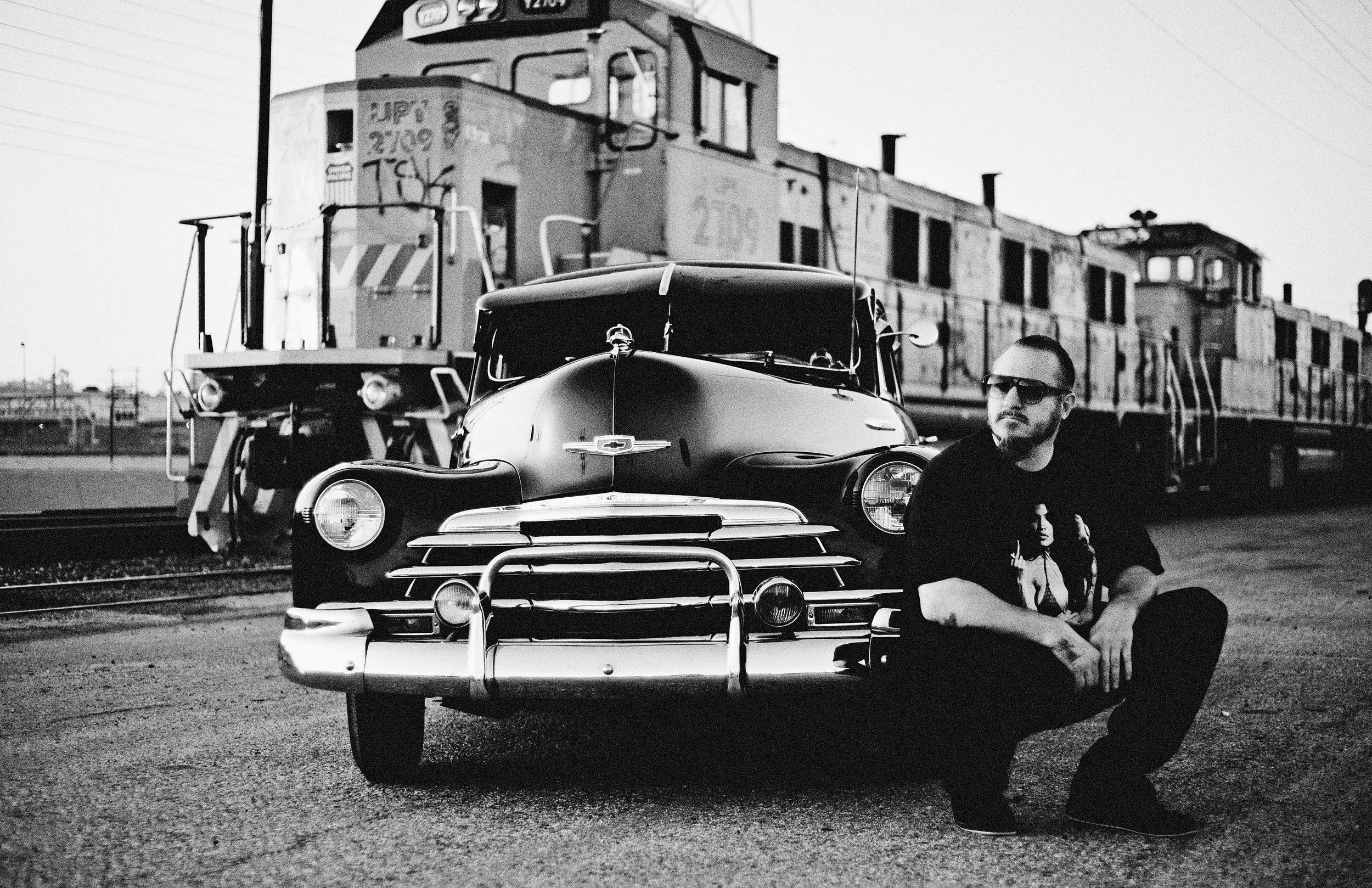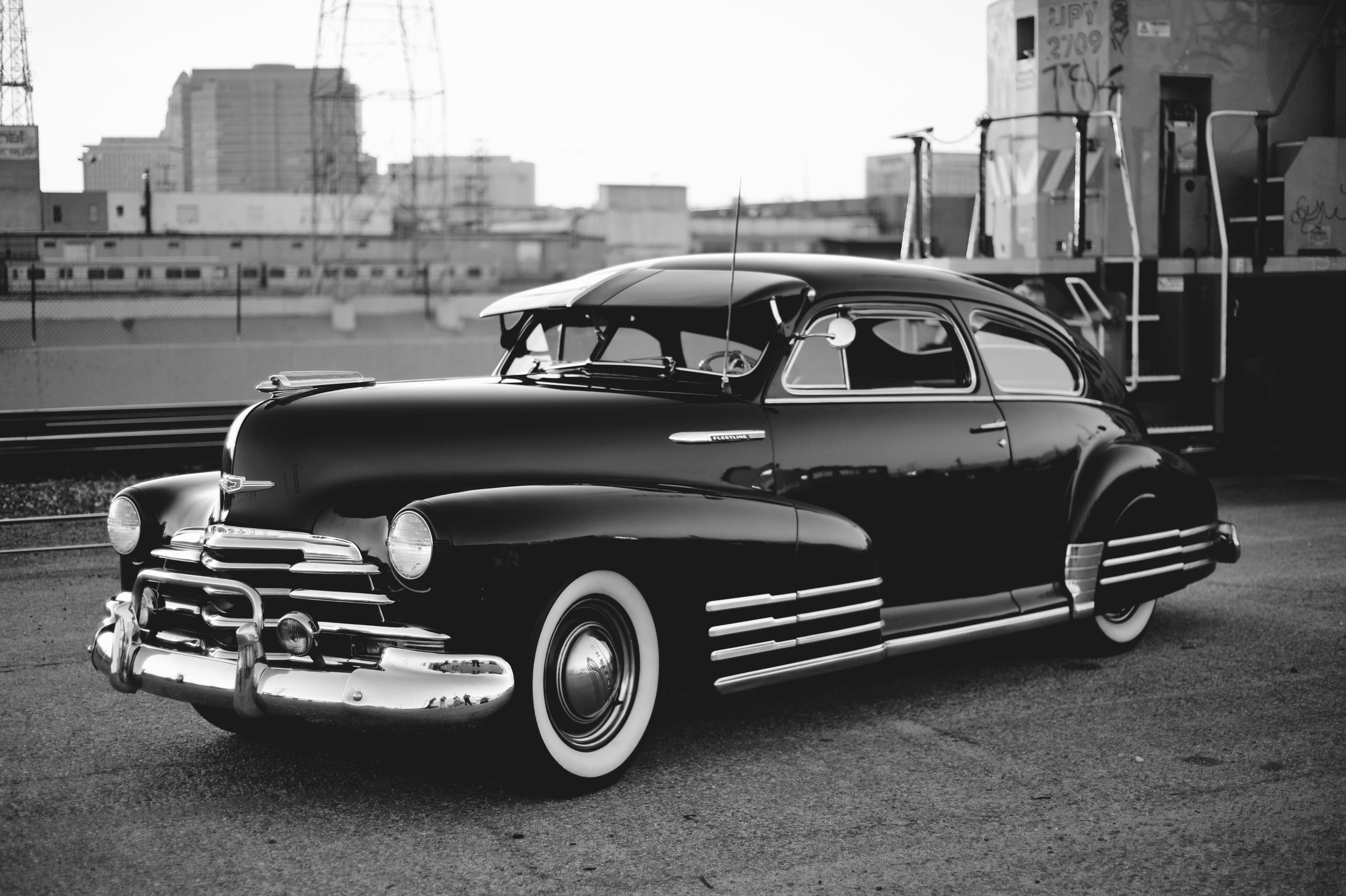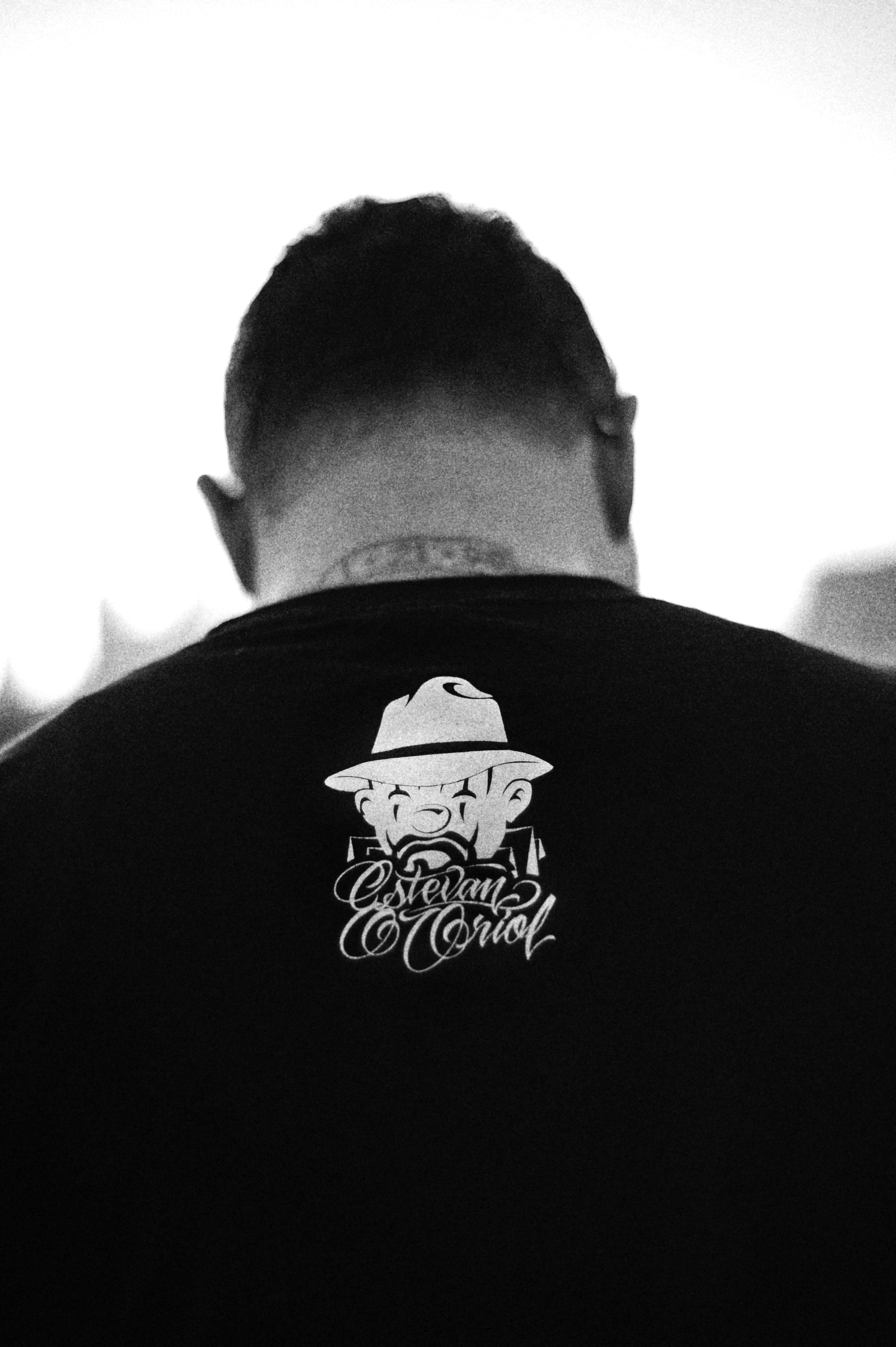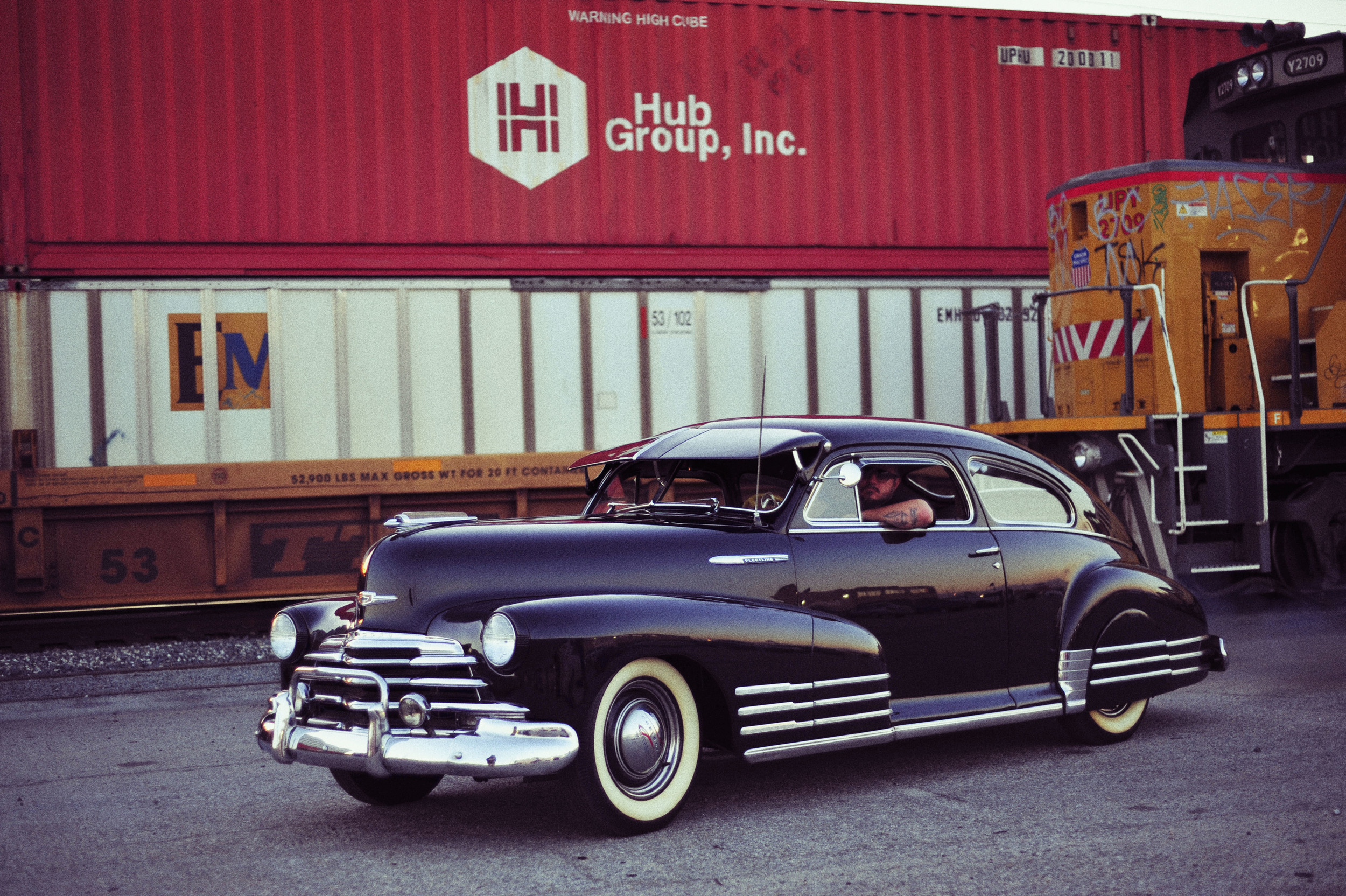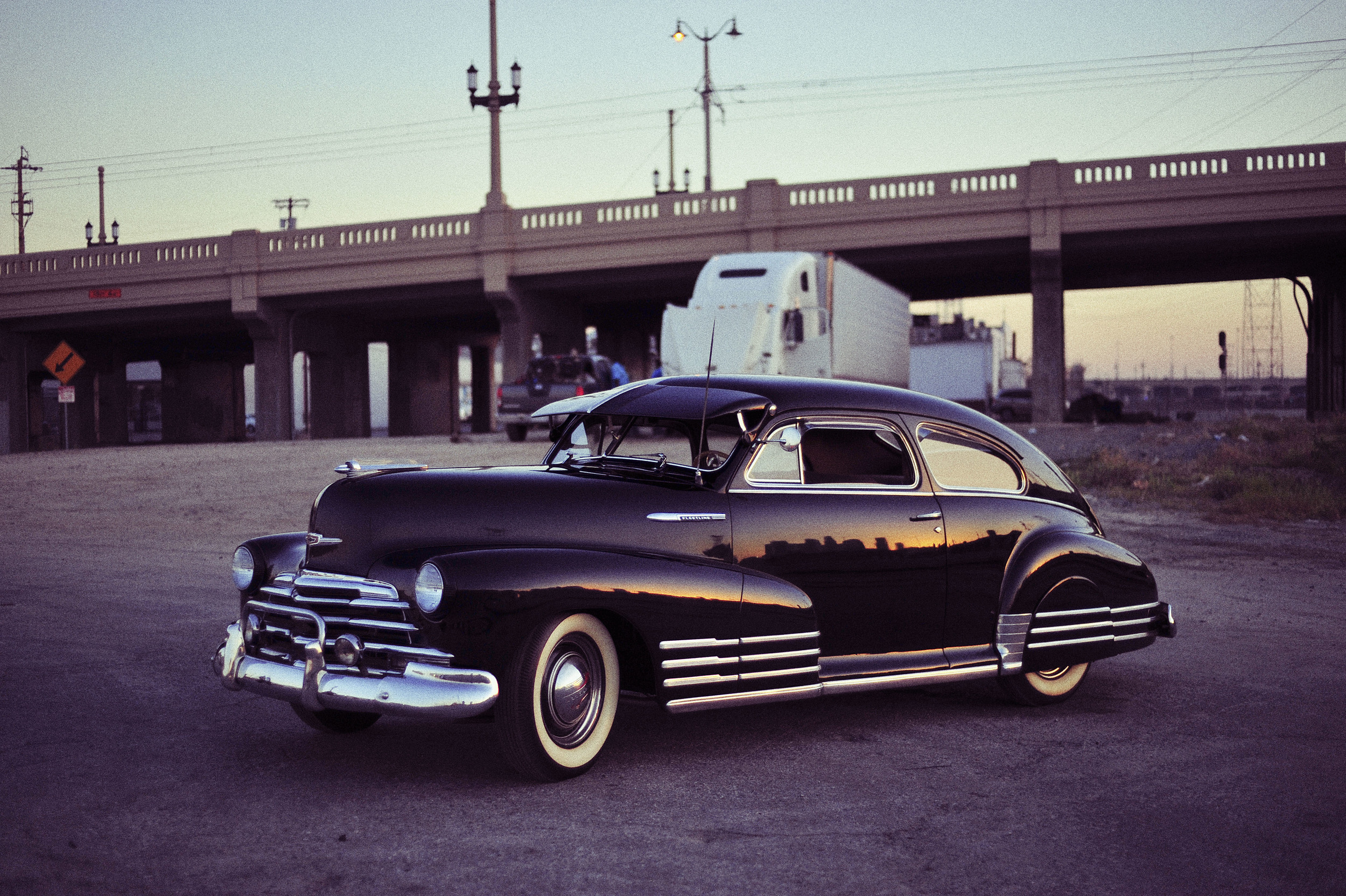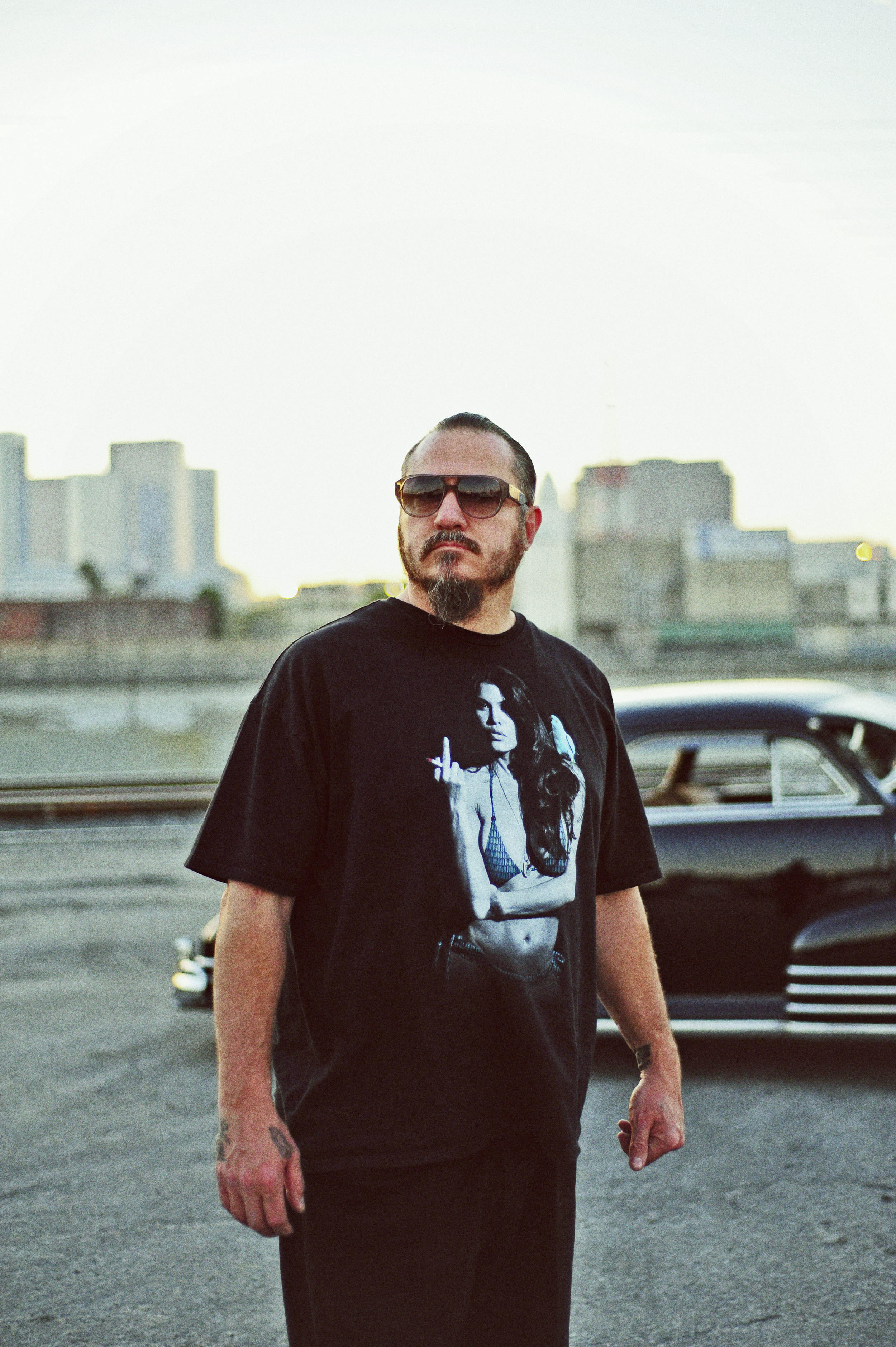The following is a published interview with photographer Estevan Oriol, who took us for a ride in his vintage 1947 Chevrolet Fleetline in Downtown Los Angeles.
SUSPEND: So what are you working on right now?
ESTEVAN ORIOL: "A couple of books and documentaries. One is my street life shit, the gangster type stuff. And the other is on L.A. women, part two. And there’s another one about this motorcycle club called the Boozefighters (BFMC). You can say they were the inspiration behind that movie “The Wild One (1953)” with Marlon Brando. Life Magazine did an article on them. And at that time, Harley-Davidson wasn’t selling that many bikes because they were associated with that movie which was like an outlaw thing. [Harley-Davidson and Life Magazine] said that 99% of people that ride Harleys don’t look like this [shows characters of the movie] and that started the whole one-percenter thing."
What were they saying they weren’t like? "Rebels. Harley-Davidson was saying that 99% of Harley Riders weren’t like that. And then more biker gangs started and so this one [The Boozefighters Motorcycle Club] has that heritage that started in the 40’s. This one chapter here in Los Angeles wants to do a coffee table book. So we have three photographers that are going to do that and the people that I am doing the book with, we’re doing a low-riding book, so there are the four of those."
So are you shooting all of it or are you directing? "I shot most of all of it already."
How do you stay organized with all these different projects? "Oh well, its always too much and too stressful, but it’s what I signed up for. The way I grew up, it was a struggle. So I thought to myself, “I don’t ever want to be like this, you know.”
Where did you grow up? "Here - I’m from L.A. But you know, you struggle in a different way. The more shit you try to achieve, that’s your struggle. Whereas we were struggling just to get by, struggling to keep the movement going, and that’s hard. The more shit you do, the more that comes your way.
More money, more problems, the more you try to do, the more problems. If I was just working at a job with a boss and it was their job to fill up my work everyday, then all I’d have to worry about is about clocking in, working and clocking out. But when you’re in my position where you’re just freelancing everything (every company I am involved with, is all freelance work) so we have to go out there and hustle the jobs so that all of our people can work. If something happens where it doesn’t come through, then what do we do? Do we keep trying to go? Do we try to make more money for these people that work? Or just say fuck it and downsize and hire as work comes?
You get into all these situations and decisions and partnerships with people that you grow to hate and it’s like, 'Fuck I didn’t want to do all this. I just wanted to fuckin’ have a normal job.' If Cypress Hill would have kept touring and stayed [as that] group, then I would have just stayed their tour manager. I’d be cool with making that money every month and touring the world and I wouldn’t have to worry about shit because it was on them selling records that made my job. But they didn’t feel like touring anymore so I was like, 'Ah, fuck.' So now I’m fucked and I chose to do the photography thing and videos. You see all this and it looks like, 'Whoa you did good for yourself and this and that,' but like you said, the stress of it, is what fucks me."
Do you choose who you work with? "You have to choose who’ll get you money. If it was my way, I’d be working for the best people, the best people in the world. It would be like, 'Oh today I wanna shoot a Louis Vuitton ad with Adriana Lima. Lemme just call up Louis Vuitton.'"
How did you get in touch with artists like Cypress Hill? "I used to work at the front doors at clubs and through that I met House of Pain, which at that time Everlast was with Rhyme Syndicate. I knew everyone. I knew Donald-D, Ice-T, Cypress Hill before that album. The Red Hot Chili Peppers, Fishbone, Boo-Yaa T.R.I.B.E. All those L.A. groups, I grew to know from working. And all the socialite actors and actresses back thenI met working at the clubs.
I was doing construction during the day and working clubs at night. And I got an offer from Muggs of Cypress Hill to work with his new band and at that time, Vanilla Ice came out. So he was like,“Hey man, I want you to work with us. I got a new thing coming up with these white boys.” And I was like, “Fuck, I don’t wanna go on tour with Vanilla Ice.” Then he told me about Everlast and he was the first white rapper I ever knew and he was good, you know. So I took that job. I told the construction and club guys that I got this opportunity for the summer. They tell me that if I want to work for free, do it. They told me that if it didn’t work out I could come back to working [back there again] too. So I ended up going on the road that summer with House of Pain and things took off: We were doing three shows a night, performing at clubs and making songs and money."
What put you on the map to where you are now? "Well, what happened was that I learned how to do the whole picture thing as I went along. And then I learned how to do the whole thing of pictures and magazines. Since I was the tour manager, I was the one who arranged all the photo shoots and merchandise. From doing all that, I learned how to do travel, accounting, merchandising and take pictures.
I learned that with so many magazines wanting interviews, each magazine only got a little amount of time with a historic band that was at their prime. I could tell they weren’t getting the shots they wanted. So at one point, I had this book of behind-the-scenes stuff and I told them if they ever wanted photos for their articles to let me know. And when I’d hand them these photos, they’d be like, 'Oh man this fuckin’ roadie over here,' because I didn’t look like a tour manager, comin’ from L.A. and the way I dressed.
And then the magazines wanted to use [my photos]. I asked them, 'What’s in it for me?' They tell me it’s like $500 for a full page or $250 for a half-page. And I’m like, 'Fuck man, five-hundred for one photo?' And my shit is costing me 25 bucks for everything. You know, I’m winning, it’s like selling drugs, I just need to do more of it. So I started taking pictures of everybody that was on the tour like Korn and Hole and all those bands…Busta Rhymes, A Tribe Called Quest, Sonic Youth, everybody...I learned the hustle of selling pictures to magazines.
So when it came time for my buddy documenting my car club, he said, 'I love your pictures and the life in them, I’d love to see them come to life.' And I said, 'Oh yeah? That’s cool.' And he hands me a Super-8 camera. 'Here take it, do whatever you want with it. Film as much as you want.' And I say, 'Well, fuck. What’s the trick?' 'No trick, just film your ass off and show me what you get done. Just take care of the camera and give it back to me when you’re done.'
I started filming then, and at that time, Ice Cube and Dr. Dre were co-directing videos. I told B-real from Cypress Hill that he should co-direct videos too. Around 1997 he told me I should do it. He just wanted me to send some of my footage but I had never done, so I made this video and they said it was perfect. The label told us we had to have them in the video, so we did it again on a $20,000 budget. They liked it so much they told us the next video’s budget was $30,000. After that, with seven videos under my belt, I went onto another record label, which was Eminem’s record label [Shady Records]. That is how I got to shoot Eminem’s video and like, 50 more videos."
Would you say that was the point of no return? "Well, no because Cypress Hill didn’t want to tour anymore. At that I point I was like, 'Fuck, I can’t even make a living.' But also at the time, album covers were going for twenty-five grand and I knew, for me, that’s what I was going for. I thought that if these guys don’t want to tour, I can just do videos and album art. But then I forgot that I’m not the one signing the checks and all that drama, so it didn’t work out the way I wanted it too. But I ended up doing maybe 15 album covers."
Favorite album cover you’ve done, go."My favorites are the Cypress Hill ones and then I would say I like the one of Snoop Dogg [Ego Trippin,’ 2008]. My favorite is a compilation called West Coast Hip Hop Life: Volume One where I got to show my street life photos. I always thought that clothing was going to be the paycheck. At the time, Fubu, Rocawear and Sean John Clothing were shipping $300 to $400 million in 2000. We were doing the whole Latino thing, so I thought:There are more Latinos in America, Puerto Ricans, Cubans El Salvadorians; they’re all different and they all like different shit. We were traveling across the States and you see every African-American in every city, wearing a Fubu shirt, we thought, 'Fuck, if we do this with the Latinos then we’re in.' But it didn’t crack. The Joker Clothing brand. It’s still going to this day.
We’ve hit a good number on that, but what people don’t realize is that if you make a million dollars in a clothing company, about half of that goes to making the clothing. And then you have rent and employees and everything else. At the end of it, you really have $100,000 to split three ways. We made $33,000 dollars selling a million dollars worth of clothing. What do we do now? You can be in a bunch of magazines and it doesn’t mean shit, you don’t get a check every time you’re in a magazine. I mean, I’ve never looked at an ad, even an awesome one, and said 'Fuck, I really want that, I really need to have this right now.'"
Where is your favorite place to shoot in L.A.? "My whole style is just winging it. I don’t come up with plans, I don’t stay up the night before and think about it. When they get here, and they ask me where we’re going to do this, that’s when my head starts rolling and to me it’s like, “Fuck, where are we gonna do this.” I start to get nervous and I kick myself in the head for not planning it. But in the time that we’re going to shoot and the time that we actually shoot and I’m losing my mind, once we get to the first spot, I glide through it and everything comes out perfect. And I’m like “Okay, cool.”
People think that the Sixth Street bridge is my favorite place, and people want to go there with the same cars and same style. At one point I just said, 'Fuck it, I’m going to burn this thing out. I’m going to shoot every angle of this bridge and there’s going to be no question about it.' There are going to be no more people saying, 'I’ve got to shoot at the 6th Street Bridge with a low-rider, with a girl and tattoos and shit.' Because I photographed the bridge to where nobody’s gonna want to fuck with it anymore. Now I’m the guy that gets the five-minute photo shoot. Like the photographs I took of Robert De Niro and Al Pacino, I did in four-and-a-half minutes. I shot one-and-a-half rolls and each had 15 frames. It’s shit like that you got to adapt to."
So what do you think is the best piece of advice you can give? "Well look, there are people that have their photo shoots planned out. They have storyboards for their photo shoots. Everything I do, I can finish in an hour and have something good. But if I have time, I’ll take three to four hours. If they let me. Most of the time, it’s winging it. It’s just going in there, and winging it."
Interview by Neil Bardon, Natasha Enriquez and Diane Abapo
Photography by Diane Abapo
Purchase ISSUE 04 with Estevan Oriol, printed in a limited quantity of 150 copies (Fall 2013).
